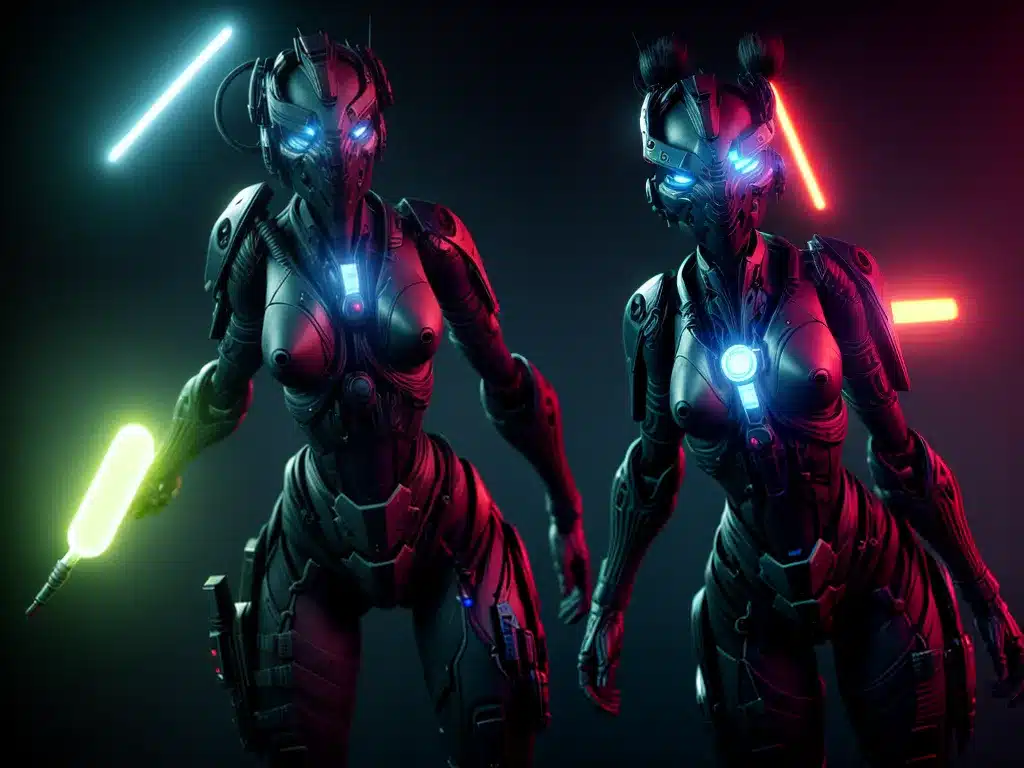Introduction
Unreal Engine 5 is the next generation of Epic Games’ ubiquitous game engine and toolset. It introduces two groundbreaking graphics technologies, Nanite and Lumen, that promise to revolutionize real-time 3D rendering and truly blur the lines between pre-rendered and real-time graphics.
What is Nanite?
Nanite is a virtualized micropolygon geometry framework that allows artists to create insanely detailed environments with tons of geometry and textures as if they were sculpting with clay.
Traditionally, game engines have limits on geometry complexity and draw calls. Artists have to manually create normal, occlusion, and other maps to “fake” detail. With Nanite, artists can sculpt extremely detailed geometry with hundreds of millions or billions of polygons and instantly stream them directly to the GPU.
Nanite virtualizes geometry by breaking down assets into tiny micropolygons at runtime. This allows Nanite to optimize and cull unnecessary micropolygons per frame to ensure optimal performance. Assets are streamed and scaled in quality based on the viewer’s distance.
Key Benefits of Nanite
- Virtualized micropolygon geometry – No more polygon budgets or draw call limits. Import film-quality source art directly into the engine.
- Nanite automatically optimizes and streams geometry as needed for optimal performance.
- Significantly reduced need for manual LODs and texture baking.
- Integrates with Lumen, UE5’s lighting system, for accurate lighting on micro details.
Nanite allows artists to create insanely detailed environments as if they were sculpting with clay, overcoming numerous limitations of past real-time 3D engines.
What is Lumen?
Lumen is a fully dynamic global illumination and reflexion system that instantly reacts to scene and light changes in real-time.
In past real-time engines, effects like global illumination, reflections, and shadows were pre-baked into lightmap textures by artists. This was time-consuming and meant that any changes to lights or geometry required rebaking.
Lumen analyzes scene geometry and lighting and computes global illumination, reflections, shadows, and other effects fully dynamically without prebaking. It intelligently adapts sampling and precision based on what’s visible on screen.
Key Benefits of Lumen
- Fully dynamic global illumination and reflections.
- Reacts instantly to lighting and scene changes.
- Greatly reduced need for prebaked lightmaps and reflection captures.
- Integrates with Nanite for accurate lighting and reflections on micro geometries.
Lumen removes the need for prebaked lighting and reflections, allowing dynamic, editable, and context-aware scene lighting in real time.
Technical Details
Under the hood, Nanite and Lumen leverage next-gen GPU features like hardware ray tracing acceleration, asynchronous computing, and others to achieve unprecedented results.
Nanite
- Leverages virtualized geometry using micropolygons that are streamed and optimized on the GPU.
- Uses compute shaders for highly parallelized culling, LODs, and visibility determination.
- Takes advantage of next-gen console SSDs and GPU decompression for optimized streaming.
- Integrates with Lumen for lighting micro details.
Lumen
- Implements fully dynamic global illumination including diffuse interreflection with rasterized shadows.
- Uses a sparse voxel octree structure for GI samples.
- Leverages GPU ray tracing for screen space reflections and refractions.
- Uses temporal accumulation for smooth updates and reduced noise.
- Adaptively reduces shading rate and GI/reflection samples based on screen size.
Impacts on Game Development
Nanite and Lumen will have wide-reaching impacts on game development.
- Designers and artists can create far more detailed and expansive environments.
- Reduced need for manually created LODs, lightmaps, reflection captures.
- Ability to dynamically modify scene lighting and geometry.
- More flexibility for dynamically modifying or destroying the environment.
- Closer parity between in-engine and pre-rendered graphics.
- Lower iteration times for artists by reducing baking and lightmap generation.
This means games can have unprecedented detail with more dynamic, interactive environments, more creative freedom for artists, and significantly streamlined workflows.
Showcases
Epic has showcased Nanite and Lumen with several stunning UE5 technical demos:
- The Matrix Awakens
- Valley of the Ancient
- City Sample
These demos showcase insanely detailed environments with billions of triangles, fully dynamic lighting and global illumination, and cinematic quality visuals all rendered in real-time.
The Matrix Awakens demo in particular showcases photorealistic virtual human characters like never before seen in real-time. These demos represent a major leap in real-time graphics.
The Future
Nanite and Lumen represent a giant leap for real-time 3D graphics, finally overcoming numerous limitations of past engines. UE5 enables cinema-quality virtual worlds at unprecedented scale.
This is incredibly exciting for the future of games and opens up new possibilities across industries like film, animation, architecture, product design and more. The lines between real-time and pre-rendered content will continue to blur.
Epic plans to release Unreal Engine 5 in early 2022. With Nanite and Lumen, the future looks incredibly bright for real-time 3D graphics and interactivity. We can’t wait to see the groundbreaking experiences developers will create!













